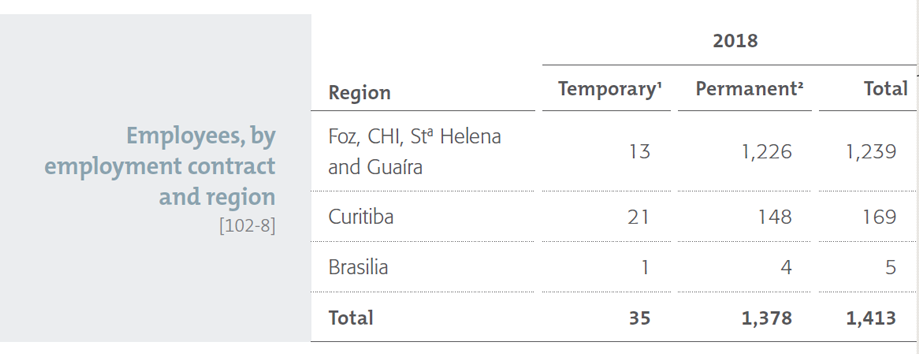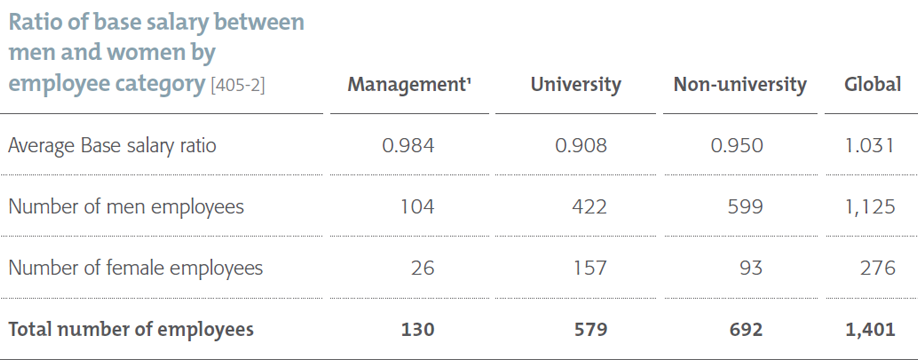[102-7, 102-8, 102-35, 102-36, 102-37, 102-38, 102-39, 103-2, 103-3, 401-1, 401-3, 403-2, 404-1, 404-2, 404-3, 405-1, 405-2, 410-1, 412-2, EU14]
At Itaipu, people management is strategic and contributes to develop their employees in search of excellence in energy production and in administrative and support processes.
The company returned to conduct organizational climate research and took advantage of the unprecedented participation in the “150 Best Companies to Work” to analyze its people management practices.
The implementation of the Safe Work Management System contributed to the elaboration of the new Occupational Health and Safety Policy.
During the year 2018, the Performance Management System achieved high rates of employee participation, which consolidates it as a channel of dialogue between managers and teams. Another highlight was the Virtual Environment of Corporate Education, which began to offer distance educational actions.
Learning trails of business management and corporate governance processes were concluded, improving the understanding of the purpose and the strategic objectives of the entity by employees.
General Employee Data
[102-7, 102-8]¹among the employees, requested employees and other organs (23) and Directors and Counselors (12)
²among the employees, they are permanent employees (1,378)
Hiring and Remuneration
[102-36, 102-37, 103-2, 103-3, 401-1, 405-2]The hiring of Itaipu is carried out through an external selective process in order to ensure the universality and isonomy of access to the company. This measure is not foreseen in its statute but is considered fundamental for a transparent and fair process of job opportunity.
The selection process does not make distinctions of gender or any other and respects the principle of inclusion by offering specific opportunities for people with disabilities and for black people.
Periodically, surveys are carried out on remuneration and management practices of people in order to support the updating of the Career Plan and Compensation for Skills (PCR).
Integrated with the PCR, the competency management model was approved binationally and predicts that the rise of the professionals happens according to the requirements of good performance, schooling, time in the position/complexity of activities and availability of opportunities.
The positions have a salary range that delimits the initial and final salary, and the movements between these salaries are regulated by the career plan. The wage table is readjusted according to trade unions.[102-36]
In addition to negotiating the collective agreement, the company conducts periodic meetings with the unions, as a channel for analysis and debate of employee claims, through the Labor Relations Committee. The union representatives are released from their labor activities for the exercise of their duties. [102-37]
¹for employees in managerial positions, the value of the base salary was added to the complementary function gratification, resulting from the creation of the referential salary level for managerial functions-DET/GB/GP/0205/10, of 03/12/10, effective from 01/01/11.
The data in the table above indicate that the average global salary of women is higher than the average global wage of men, because of the proportion of women in managerial positions is higher than that of men. The proportion of women in managerial function (19.8%) is slightly higher than the proportion of women in the company (19.6%).



 Português
Português
 Español
Español



